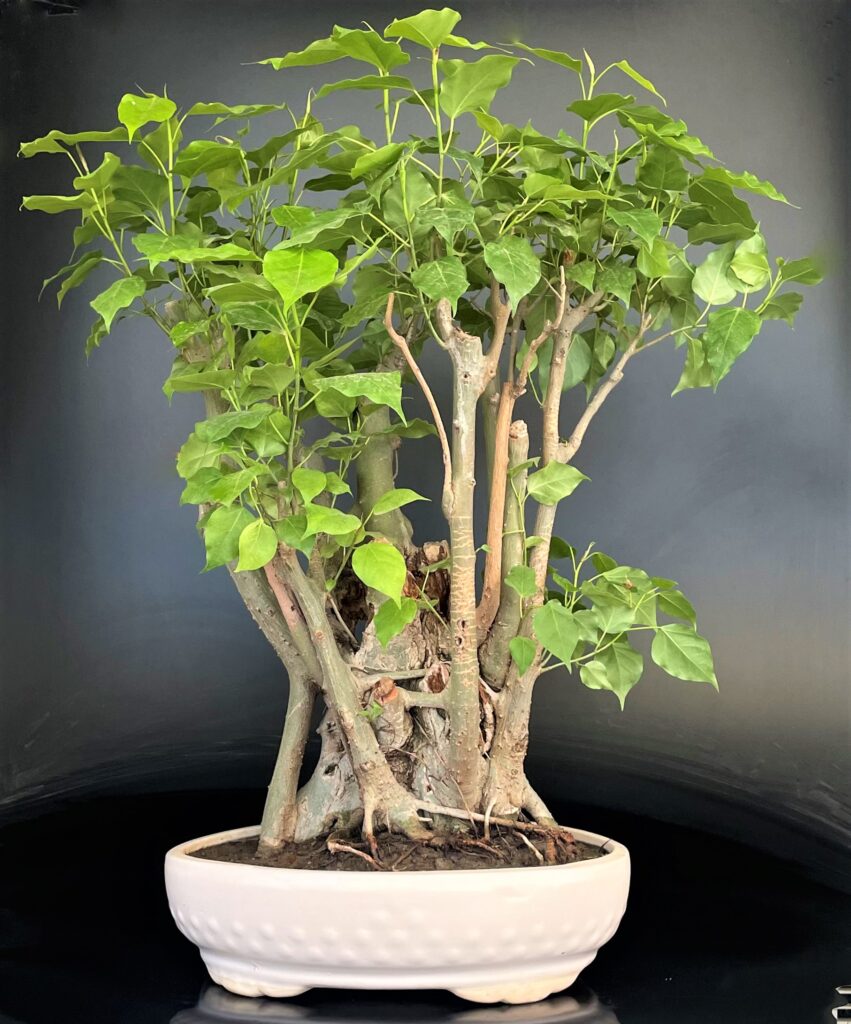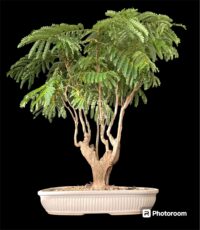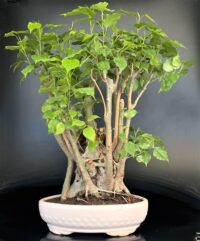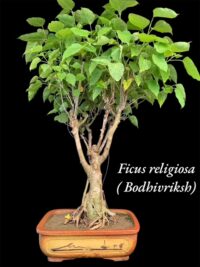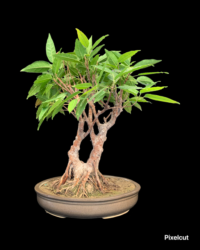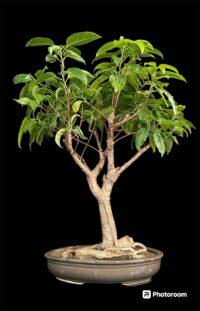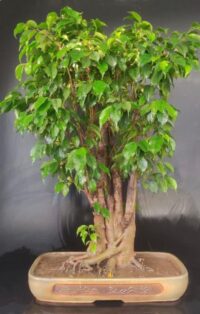Bodhgaya Bodhi Tree-The celebrated 1
Bodhgaya Bodhi Tree is the most celebrated in Indian Culture, the Bodhi Vriksha: Some Facts
Bodhgaya Bodhi vriksha is the most celebrated in Indian Culture. The Vriksha, also known as the “tree of awakening,” is a large sacred fig located in Bodh Gaya, Bihar, India.
This is of great significance in the history of Buddhism as it is the very vriksha under which Siddhartha Gautama, the spiritual teacher who later became known as the Buddha, attained enlightenment around 500 BCE. It is characterized by its distinctive heart-shaped leaves which are often prominently displayed in religious iconography.
Although the original Plant under which Siddhartha Gautama sat is no longer alive, the term “Bodhi ” is still used to refer to another sacred fig. One of the most notable of these is the Mahabodhi which is located at the Mahabodhi Temple in Bodh Gaya.
This particular plant is believed to be a direct descendant of the original plant and has been growing since around 250 BCE. It is considered one of the most important Buddhist pilgrimage sites and is frequently visited by pilgrims from all over the world. Source Wikipedia.
This Mahabodhi is Ficus religosa {Reference}
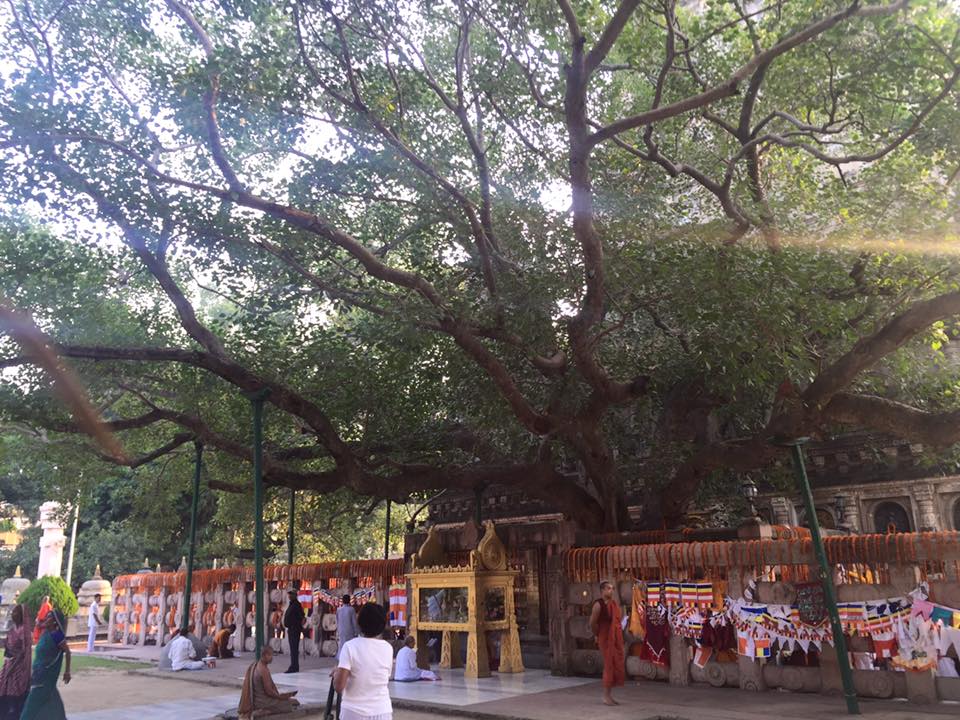
It is called Bodhivriksha in Hindi language. It is native to the Indian subcontinent and parts of Indochina. It belongs to the fig/mulberry family (Moraceae). In India and Nepal, it is also known as the ashvattha.
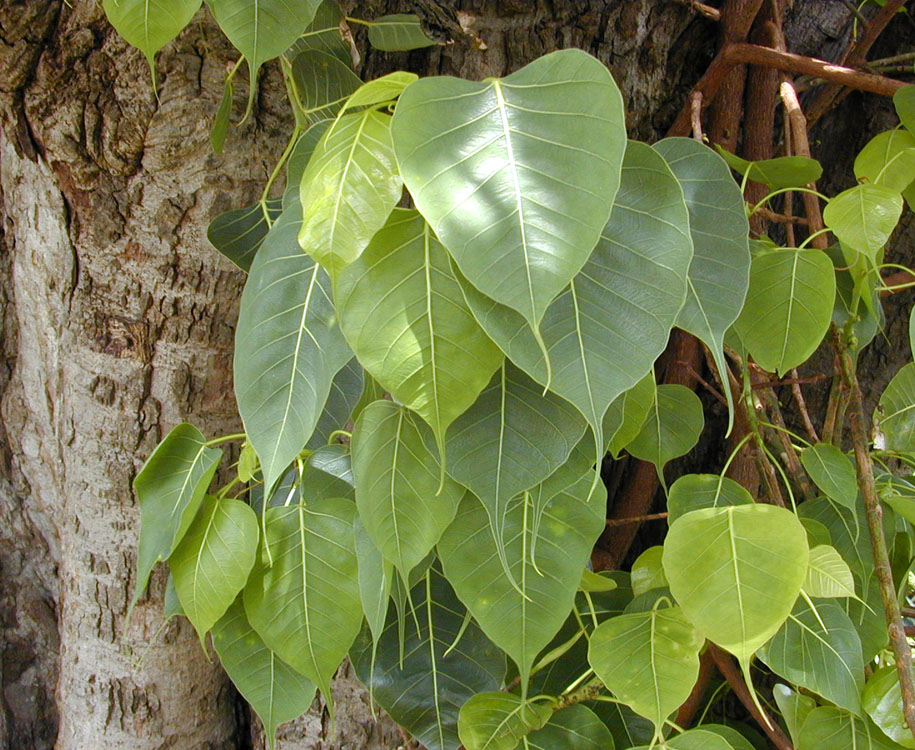
The sacred fig is considered to be of great religious significance in three major religions that originated in the Indian subcontinent: Hinduism, Buddhism, and Jainism. Hindu and Jain ascetics regard the species as sacred and often meditate under it. It is believed to be the plant species under which Gautama Buddha attained enlightenment.
How Sacred is the Bodhi Vriksha and Why?
Now that we have known the significance of this plant and its role in various religions, let us indulge deeper into the facts.
The History of the Bodhi Vriksha
The Bodhi Vriksha has a rich history that spans over two thousand years. According to Buddhist tradition, after Siddhartha Gautama attained enlightenment, he sat under the Bodhi for seven days in a state of deep meditation. It is believed that during this time, he gained insight into the nature of reality and achieved a state of enlightenment or Buddhahood. After his enlightenment, the Buddha continued to meditate under the Bodhi and gave many teachings to his followers.
The original Bodhi Vriksha was destroyed in the 3rd century BCE, but it was replanted from a sapling taken from the original vriksha Today, the Bodhi vriksha in Bodh Gaya, India, is believed to be a direct descendant of the original Bodhi.
The Mythology of the Bodhi Vriksha
The Bodhi Vriksha is steeped in mythology and symbolism. According to legend, the Bodhi was originally a demon called Mara, who tried to distract the Buddha from his meditation by sending his daughters to seduce him. But the Buddha remained steadfast, and Mara’s daughters were unable to sway him. In frustration, Mara attacked the Buddha with a storm of arrows, but the arrows turned into flowers when they came into contact with the Buddha’s aura of compassion.
Finally, Mara challenged the Buddha’s right to sit under the tree, but the Buddha touched the ground with his hand and called upon the Earth as his witness. The Earth shook, and Mara fled in defeat. From that moment on, the tree became a symbol of the Buddha’s victory over ignorance and temptation.
The Cultural Significance of the Bodhi Vriksha
The Bodhi Vriksha has immense cultural significance for Buddhists all over the world. It is considered a sacred site and a place of pilgrimage for Buddhists who come to Bodh Gaya to pay their respects to the tree and to meditate in the shade of its branches. The tree is also a symbol of the Buddha’s teachings, which are said to provide shelter and protection from the storms of life.
In addition to its religious significance, the Bodhi Vriksha has also played an important role in the cultural history of India. The site of Bodh Gaya, where the Bodhi is located, is a UNESCO World Heritage site, and it has been a centre of learning and culture for over two thousand years. The tree is also an important symbol of India’s cultural heritage, and it is featured on the Indian rupee note.
Significance of Bodhi in Sanatan Dharma
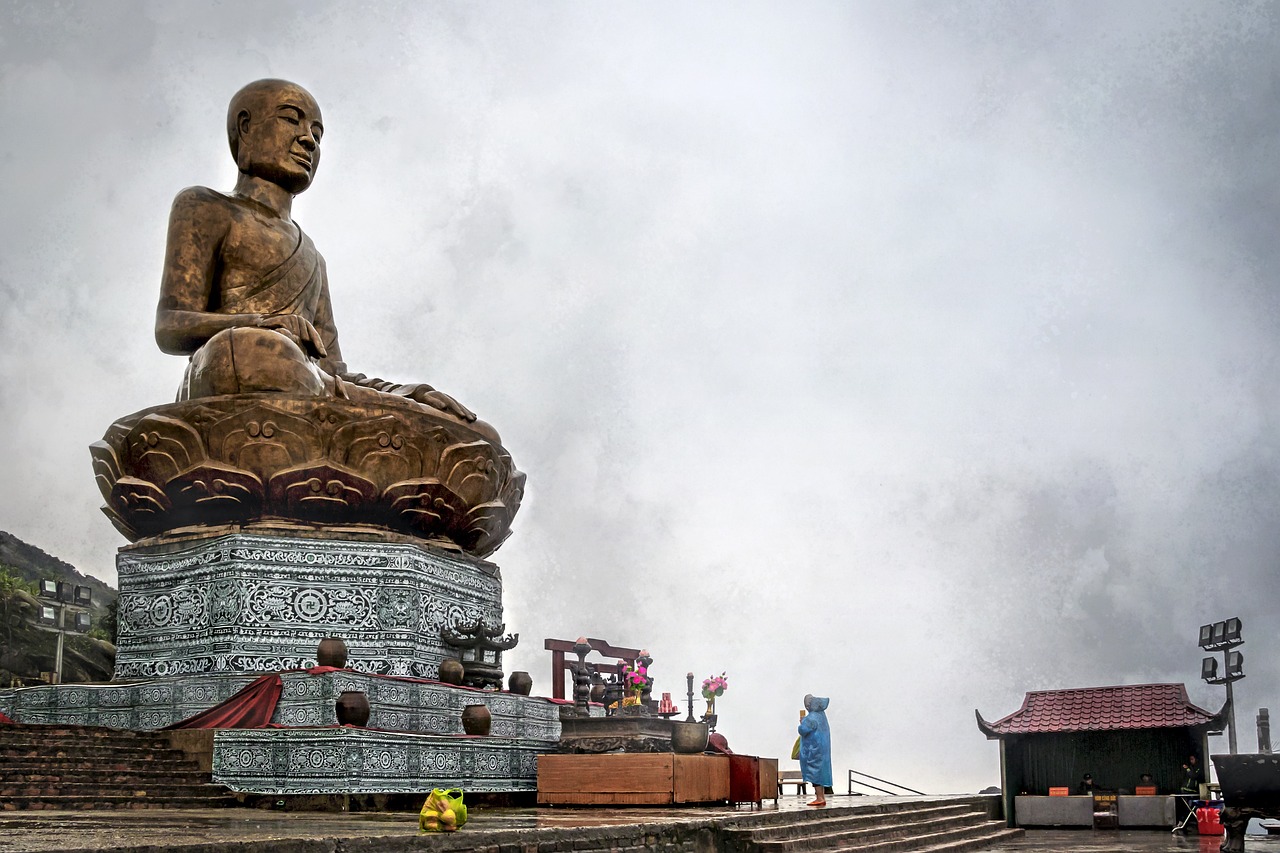
The Bodhi Vriksha / bodhivriksha /Peepal/ficus religosa, also known as Vasudeva, holds great significance in the Hindu religion.
It is considered to be the most sacred and is often referred to as the Tree of Gods. According to Hindu beliefs, every leaf of the Peepal is said to be inhabited by deities.
Goddess Lakshmi and Lord Vishnu are said to reside in the tree on Saturdays, making it an auspicious day to worship the tree. Worshipping the tree is believed to bring good fortune, happiness, and prosperity to those who do so. It is also said to pacify the ruling planets, making it an effective remedy for those with unfavourable astrological charts.
Additionally, worshipping the bodhi vriksha is believed to help alleviate any ‘dosh’ or negative effects in one’s zodiac sign. The lifespan of the Peepal is exceptionally long, and planting one is said to bring longevity and ensure the continuity of one’s lineage. {Source}
There are numerous Myths and mythologies associated with this sacred tree. There are more than hundreds of scientific reasons, why it is considered so sacred. The significance of trees goes beyond their role as the largest providers of oxygen. They also have many medicinal properties that are crucial to biodiversity. Among them, some of the most notable are found in the Bodhi. {Source}
I am the Peepal tree among the trees,
Narada among the sages,
Chitraaratha among the Gandharvas,
And sage Kapila among the Siddhas.— The Bhagavad Gita (Chapter 10: Yoga of Manifestation)
It is not surprising that a tree with such cultural significance and rich history has been chosen to represent India’s highest civilian award – the Bharat Ratna. The award, which was instituted in 1954, is given to individuals who have made exceptional contributions in various fields such as science, literature, arts, social services, and public affairs.
The emblem of the Bharat Ratna features an image of the Peepal leaf along with the words “Bharat Ratna” inscribed in the Devanagari script. This choice of emblem reflects the deep cultural roots of India and the importance of nature and spirituality in the country’s identity.
The Bodhivriksha leaf, as mentioned earlier, holds great religious and cultural significance in Hinduism and is considered sacred. It is also known for its long lifespan and is believed to symbolize immortality and continuity. Hence, it is a fitting symbol for an award that recognizes individuals who have made outstanding contributions to society and whose legacies will continue to inspire generations to come.
The Bodhi tree’s choice as the emblem of the Bharat Ratna is a testament to its cultural and historical significance and reflects India’s rich heritage and traditions.

Buy Bodhi Vriksha Bonsai: A Symbol of Peace, Harmony, and Enlightenment
Bodhi Vriksha, also known as the Bodhi or the Sacred Fig, is a revered symbol in Buddhism, Jainism, and Hinduism. The vriksha is believed to have immense spiritual significance and is considered sacred in these religions. The Bodhi vriksha is the tree under which Lord Buddha attained enlightenment, and it is believed that the vriksha brings peace, harmony, and enlightenment to its surroundings.
Bodhi Vriksha Bonsai is a miniature version of the Bodhi vriksha that is popular among bonsai enthusiasts. The bonsai is grown from the seeds of the Bodhi Vriksha and is considered a symbol of spiritual growth, peace of mind, and good luck.
In this article, we will discuss the various significance of the Bodhi Vriksha Bonsai and why you should consider buying one.
Significance of Bodhi Vriksha Bonsai
The Bodhi Vriksha Bonsai is a symbol of peace, harmony, and enlightenment. It is believed that the bonsai brings positive energy and good luck to its surroundings. Here are some of the significance of Bodhi Vriksha Bonsai in different religions:
Buddhism: In Buddhism, the Bodhi is considered sacred as it is the tree under which Lord Buddha attained enlightenment. The Bodhi Vriksha Bonsai is a symbol of the Buddha’s enlightenment and is believed to bring spiritual growth and enlightenment to its surroundings. It is also believed to be a powerful symbol of the Buddha’s teachings, which emphasize compassion, wisdom, and inner peace.
Jainism: In Jainism, the Bodhi is associated with the Tirthankara, which are the 24 spiritual leaders of Jainism. The Bodhi Vriksha Bonsai is believed to bring peace and harmony to its surroundings and is considered a powerful symbol of Jainism’s core values of non-violence, truth, and compassion.
Hinduism: In Hinduism, the Bodhi is associated with Lord Vishnu, one of the major deities in Hinduism. The tree is considered a symbol of knowledge, wisdom, and enlightenment. The Bodhi Vriksha Bonsai is believed to bring good luck, peace, and prosperity to its surroundings.
Benefits of Bodhi Vriksha Bonsai
Apart from its spiritual significance, Bodhi Vriksha Bonsai has numerous benefits that make it a popular choice among bonsai enthusiasts. Here are some of the benefits of having a Bodhi Vriksha Bonsai:
Calming effect: The Bodhi Vriksha Bonsai is believed to have a calming effect on its surroundings. The bonsai’s presence can help reduce stress and anxiety, promoting relaxation and peace of mind.
Air purification: Like all plants, the Bodhi Vriksha Bonsai helps purify the air by absorbing harmful pollutants and releasing oxygen.
Aesthetic appeal: The Bodhi Vriksha Bonsai is an attractive plant with delicate leaves and a distinctive trunk. It can add a touch of natural beauty to any indoor or outdoor space.
Low maintenance: The Bodhi Vriksha Bonsai is a low-maintenance plant that requires minimal care. It can thrive in a variety of environments and is easy to grow and maintain.
Buying a Bodhi Vriksha Bonsai.
If you are interested in buying a Bodhi Vriksha Bonsai, there are a few things you should keep in mind. All the Ficus plant species possess similar qualities, scientifically, all of them belong to the same family of plants.
As discussed above The bodhi, as mentioned earlier, holds great religious and cultural significance in Hinduism and is considered sacred. It is also known for its long lifespan and is believed to symbolize immortality and continuity.
Bodhi Vriksha Bonsai Online Delhi & NCR
Anniversary Gift for Parents: A Bonsai Symbolize longevity
What is Bodhi tree famous for?
Bodhi Tree is Ficus religosa. According to Buddhist tradition Buddha attained salvation after meditating under Bodhi Tree.
Is Bodhi tree a Peepal tree?
Bodhi & Peepal Tree carries the same botanical name i.e. Ficus religosa but both have varietal differences and there is also a visual difference in the leaf shape.
Are Bodhi trees rare?
No. Bodhi tree are commonly found in India, particularly in East Indian States
What is the national tree of India?
Bargad / Barh / Banyan / Ficus bengalensis is the National Tree of India
Buy Bodhi Vriksha Bonsai Online
Bodhi Vrikasha Brings Peace to Mind
Our Motto
What you see is what you get
Delivery
Personalised delivery at door step
Mission
Creating green spaces
